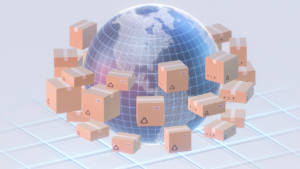Rising nationalism, the protectionism it spawned, and the coronavirus pandemic forced many companies to reexamine their global supply chains. Even before protectionism and pandemic were considerations, I argued that globalization is evolving into regionalization. My reasoning is simple, regionalized supply chains place manufacturers closer to consumers and reduce transportation costs. With growing public concern over supply chain carbon footprints, reducing transportation requirements makes corporate sense. Back in 2019, McKinsey & Company analysts noted, “Although output and trade continue to increase in absolute terms, trade intensity (that is, the share of output that is traded) is declining within almost every goods-producing value chain. Flows of services and data now play a much bigger role in tying the global economy together.”[1] They asserted this transition to regionalization involves three factors. They wrote, “Three factors explain these changes: growing demand in China and the rest of the developing world, which enables these countries to consume more of what they produce; the growth of more comprehensive domestic supply chains in those countries, which has reduced their reliance on imports of intermediate goods; and the impact of new technologies.”
According to V. Raju, Senior Vice President, CL, Chemical, Pharma & Food Sector at Avvashya CCI Logistics, this movement towards regionalization remains unabated. He writes, “These profound changes in the world economy, together with COVID-19 consequences, are now determining the changes in global value chains. Corporations are thus now attempting to unpick some of the intricacy, while also trying to shorten the distance between production sites and their home country. They are also aiming at setting up production bases across offshore sites to reduce the risk of losses in the event of another crisis. Countries are now looking for distribution channels for goods that are closer to production sites. Going forward, we are likely to witness the restructuring of value chains, making them shorter, increasingly diversified, and more regionalized.”[2]
What the changing landscape means for supply chains
According to Daniel Smith, a Product Marketing Specialist with Amber Road, “There was a time when the world was flat — at least as far as global trade goes. Goods were mainly produced close to their end-users and supply chains were relatively short and linear — moving a product from source to consumption. But over the last two centuries trade has exploded and transformed the global economy.”[3] For the most part, Smith is correct; however, every year archaeologists discover artifacts demonstrating global trade has deep historical roots. Nevertheless, Smith’s point remains valid: global trade has continued to become more complex through the centuries. Much of today’s rethinking about global supply chains concerns ways of making supply chains less complex (or, at least, finding better ways to deal with that complexity). Smith believes technology is helping companies deal with complexity. He explains, “With today’s technological advantages like the Internet of Things (IoT), the connection between supplier and consumer is becoming faster through digitization. From UPS to Amazon to ocean shipping containers, consumers are no longer connected just to the link in the chain immediately upstream from them. Now they can be ‘digitally connected’ directly to their product even as it traverses the world. Through technology, each link can be connected to all the other links, creating a chainmail rather than a chain.”
Smith is not alone in his assessment that technology is having a big impact on global supply chains. The staff at PYMNTS.com writes, “The availability of data insights, heightened transparency, connected technologies and robotic, automated data solutions is also helping supply chain companies further improve efficiencies. Integrating these connected systems and data analytics services into supply chain operations is referred to as ‘Supply Chain 4.0.’ Recent analysis indicates that Supply Chain 4.0 could have a wide-ranging impact on the market. Its innovations have the potential to reduce operational expenses by roughly 30 percent … while also decreasing lost sales and inventories by 75 percent. These developments are expected to help supply companies improve their customer interactions, offering easier access to insights and using real-time data to improve quality of services.”[4] Cognitive solutions, like the Enterra Supply Chain Intelligence System™, powered by the Enterra Cognitive Core™, can help discover actionable insights from data generated by digitized supply chain processes so that supply chain professionals can make better decisions in a complex environment. The PYMNTS staff adds, “Future developments may also see drones and autonomous vehicles used to facilitate deliveries, and warehouses are embracing related technologies that can locate goods and usher them along faster. These systems can communicate their activities in real time, too, providing updated information on supply chain status and enabling others in the process to anticipate goods’ deliveries or potential delays. The supply chain is no longer simply a method of shipping items from one party to another. It has evolved into an information-rich system with insights and intelligence helping to advance its evolution.”
The resilience imperative
Although digitization and connectivity help professionals deal with supply complexity, Smith cautions, “Since everything is connected, what affects one link affects all the others, not just in a linear way but in a ripple-pattern. When your business strategy depends on these linkages, any disruption is cause for concern.” Dave Kipe, Chief Operating Officer at Majestic Steel, concurs. He writes, “Supply chain leaders need to remain resilient and prepared for abrupt change.”[5] He suggests few ways supply chain leaders and manufacturers can prepare for this change:
- Evaluate your existing and future customer footprint and map it against your existing manufacturing and supply chain capabilities. You might be surprised at the disconnect.
- Re-calibrate operational costs and capital costs and completely reshape existing assumptions.
- Research and examine advanced manufacturing technologies, including AI, robotics, and automation, and interpret the impact on your infrastructure and customer service model.
- Proactively try to rebuild your declining supply-chain ecosystems, but collaborate with your customers and peers to optimize ideas and technologies.
- Engineer your supply chains to be resilient to future inevitable changes and instabilities in government regulations, trade policies, and exchange rates.
He adds, “It’s important that we don’t paint the global supply chain with broad strokes. When we talk about complex supply chains, we must remember how varied they can be; relative on what they produce, how they produce, and where they produce. The variety adds complexity, and needs to be taken fully into account in analytical terms. But supply chains also have much in common, especially when we try to understand how they are affected by rapid change.”
Concluding thoughts
Despite the fact that regionalization is becoming a prominent feature of global trade, globalization isn’t going away. Mark Dohnalek (@MarkDohnalek), President and CEO at Pivot International, observes, “Today’s manufacturing and supply chain landscape is prominently characterized by two seemingly competing forces: globalization and localization. They are both tremendously important while setting a different framework for growth.”[6] He adds, “[Technological] advances will improve Globalization because of improved communication, relevant technology and the ability to remove barriers caused by distance and time-zones. But it also means we will need to continue training and innovating which will lead to the thousands of new, high-paying jobs which is a plus for Localization. From now and years to come, whether a manufacturer, logistics, transportation or software partner in the supply chain, we can expect Globalization with Localization will be inter-connected.” There is no single blueprint for how companies should adapt to the ever-changing global landscape, which means companies need to constantly reexamine how their supply chains are working.
Footnotes
[1] Susan Lund, James Manyika, Jonathan Woetzel, Jacques Bughin, Mekala Krishnan, Jeongmin Seong, and Mac Muir, “Globalization in transition: The future of trade and value chains,” McKinsey Global Institute, 16 January 2019.
[2] V. Raju, “Supply Chains Move From Globalization To Regionalization,” BusinessWorld, 1 March 2021.
[3] Daniel Smith, “The Chainmail Effect: How Globalization Impacts the Supply Chain,” Supply Chain Digest, 14 March 2019.
[4] Staff, “Deep Dive: Rethinking Global Supply Chains,” PYMNTS.com, 27 August 2018.
[5] Dave Kipe, “Globalization vs. Protectionism – A Need for Supply Chain Resiliency,” Supply Chain Management Review, 27 March 2017.
[6] Mark Dohnalek, “Globalization vs. Localization and Why They Both Matter,” Supply Chain Management Review, 30 October 2017.





